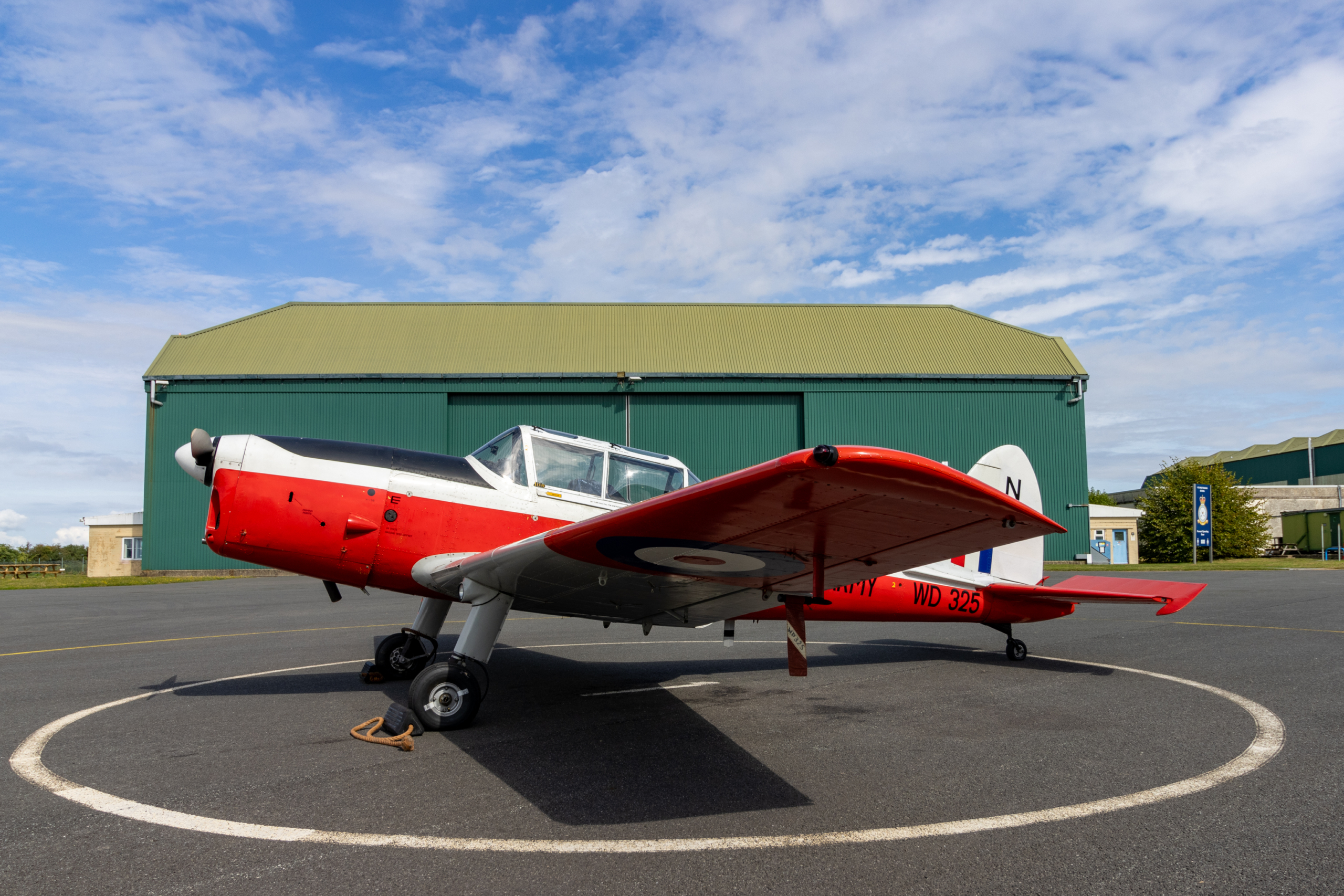De Havilland Canada DHC-1 Chipmunk
- Manufacturer: De Havilland Canada
- Model: DHC-1 T.10
- Year built: 1951
- Aircraft Type: Fixed wing single engine
- Number of Seats: Pilot plus 1
- Number of Engines: 1
- Engine Type: Reciprocating
- Engine Manufacturer and Model: Gipsy Major
- Civil registration: G-CLWK
- Military registration: WD325
The De Havilland Canada DHC-1 T.10 Chipmunk is a tandem, two-seat, single-engined primary trainer aircraft. With it’s Gipsy Major engine developing 143 bhp, it cruises at 90 knots, has a top speed of 173 knots / 200 mph and an endurance of 3 hours. It was the manufacturer’s first post-war aviation project and had its maiden flight on 22nd May 1946.
The Chipmunk sold in large numbers and was typically employed as a replacement for the De Havilland Tiger Moth biplane. The type was produced under licence by De Havilland in the UK, who would produce the vast majority of the 1,284 Chipmunks built.
Military Service
The HAAF Chipmunk, WD325, was one of the first aircraft to be delivered for Army pilot training at Middle Wallop, arriving on 9th October 1957. The Chippy is an aircraft which holds many fond memories for all Army Pilots who learned to fly in her. The main reason for this popularity was because it was easy to handle both on the ground and in the air. At its peak, the School of Army Aviation operated 21 aircraft in daily use. The type was slowly phased out of wider UK military service from the late 1970s, although in the ab-initio elementary training role, this did not happen in the British Army until 1997.

